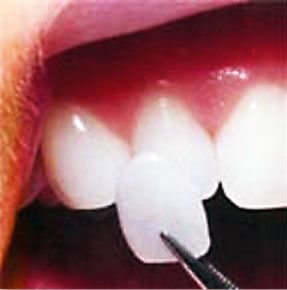Why are my gums bleeding after porcelain veneers?
Home/Blog / Why are my gums bleeding after porcelain veneers?
Several months ago, I had four porcelain veneers placed on my front teeth. I have been determined to keep them looking great after how much money I spent on them. So, I’ve brushed and flossed after almost every meal. I was surprised that my gums are very sensitive and irritated. They bleed easily during brushing. Since I’ve never had porcelain veneers or any cosmetic dentistry, I figured this was normal.
However, at my last cleaning, the hygienist lectured me about the importance of regular oral hygiene, especially with porcelain veneers. She said I wasn’t doing a good enough job and it looks like I’m getting gum disease. I was shocked! Would the new porcelain veneers be making me more prone to gum disease?
-Erica in Florida
Erica
Bleeding gums is not normal and needs to be addressed. Hopefully, the hygienist went over some other ways you could improve your daily hygiene routine. Many patients really like a water pick, which can help reach hard to reach areas. Or it may be possible that you have changed how your regularly brush and floss without realizing it.
Whatever the case, the timing of the new porcelain veneers and the symptoms of gum disease is concerning. Did you see a cosmetic dentist or a general dentist for the placement of the porcelain veneers? The reason I’m asking is that not every dentist does an excellent job on porcelain veneers. It takes extensive training and experience beyond dental school to do cosmetic dentistry successfully. Not many dentists fall into this category. In fact, it’s less than two percent of dentists that are equipped to do porcelain veneers well.
 If indeed the dentist wasn’t one of these top two percent of cosmetic dentists, it may be an issue with the edges or “margins” of the porcelain veneers. If the veneer doesn’t sit flush with the tooth, it may have a small ledge in the transition. This can lead to bacteria and food particles to become trapped, which can lead to decay and gum disease. These margins that are not seamless are very difficult to keep clean. A similar problem may also be caused by overuse of dental bonding material or cement. Bacteria can cause the increase in irritation right along the gum line, where the veneer meets with the tooth.
If indeed the dentist wasn’t one of these top two percent of cosmetic dentists, it may be an issue with the edges or “margins” of the porcelain veneers. If the veneer doesn’t sit flush with the tooth, it may have a small ledge in the transition. This can lead to bacteria and food particles to become trapped, which can lead to decay and gum disease. These margins that are not seamless are very difficult to keep clean. A similar problem may also be caused by overuse of dental bonding material or cement. Bacteria can cause the increase in irritation right along the gum line, where the veneer meets with the tooth.
So, at the very least, you should try to improve your oral hygiene with improved techniques. It would be good to go back to the dentist and have the margins checked. If they are a problem, the original dentist should fix it at no additional cost. Although, if the margins are bad, it may be better to see another cosmetic dentist. Then, you can be sure they are addressed properly and find out what you need to do to get back on track with your oral hygiene.
Thank you for your question. Hopefully, this will be helpful.
This post is sponsored by Lexington cosmetic dentist Hamburg Expressions.
Previous Post Next Post